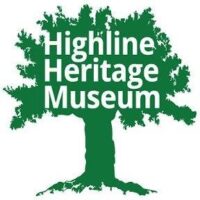The Highline Heritage Museum began when an organization called the Burien Heritage Society was founded in 1994. The Society soon merged with the Friends of the Highline School District and acquired their large collections relating to the history of the school district. Later acquisitions of the archives of The Highline Times and thousands of articles of local community history have made founding a regional heritage museum imperative. At that time the name was changed to “Highline Historical Society” to reflect the region that the several hundred thousand 3-dimensional objects, photos, slides, films, and documents represent.
Highline is the geographic area in Southwest King County Washington adjacent to the City of Seattle.
The Heritage Museum uses several criteria to define Highline. For our collecting purposes we define Highline as being bounded on the North by Seattle’s City Limits, on the West by Puget Sound and on the South by 252nd Street, just at Salt Water State Park. I-5 forms the primary part of the area’s eastern boundary.
The community of Highline is not a governmental entity, but a school district, known locally as “401” or the Highline School District. It covers White Center, Burien, Normandy Park, SeaTac, part of Des Moines and a portion of unincorporated King County.
The first Seattle-Tacoma highway, which passed through the district, was called the High Line, as opposed to the valley or river route between the two cities. In 1924, when the high school was built, there was a contest to name the school. Ralph Land, a pupil at Mt. View School, suggested the winning name, Highline, which now refers to the whole area included in the school district #401 boundaries.
The new High Line road was also referred to in Seattle Times articles and in King County road documents as the “Highline Road”. “Highline” came to be the name adopted for much of southwestern King County, as the road connected the numerous towns in the area.


